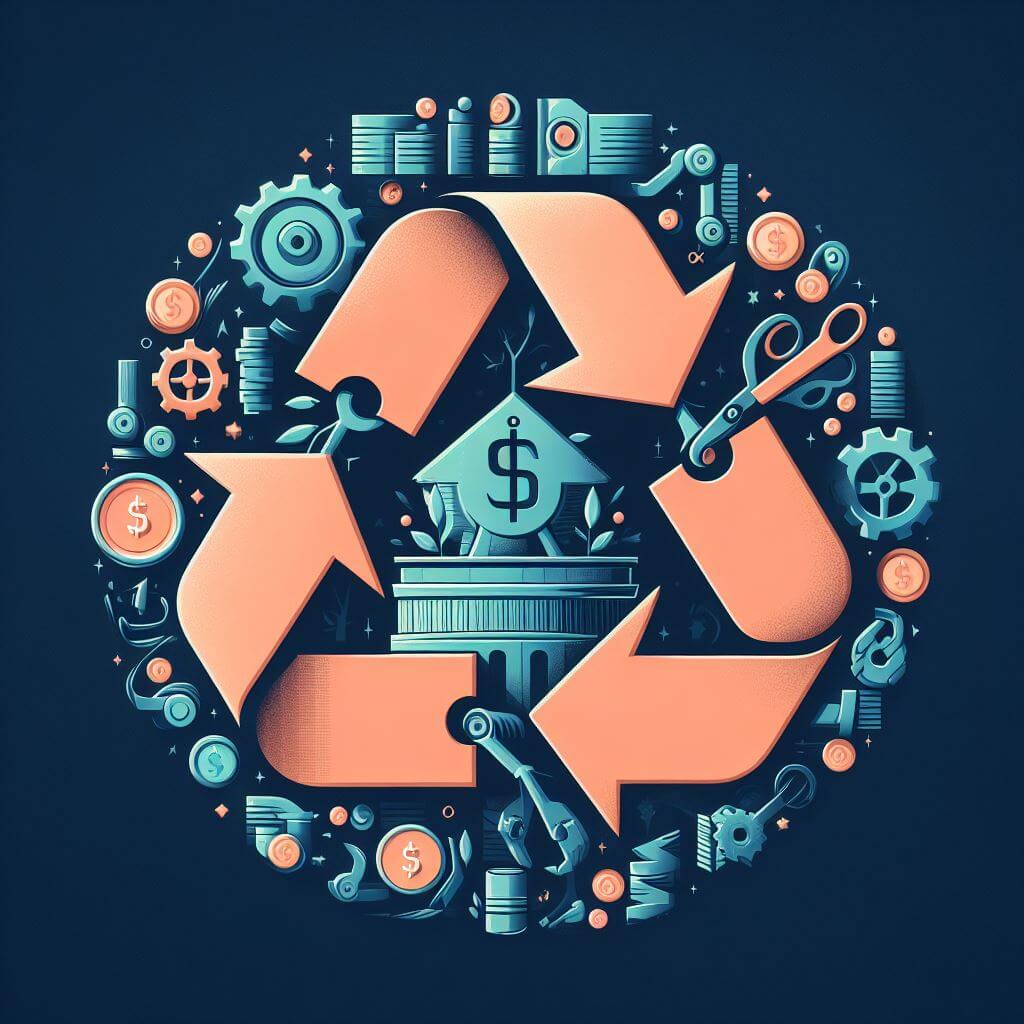Debt Recycling in Australia: A Wealth-Building Strategy
Last Updated on 27 January 2024 by Ryan Oldnall
Debt recycling is a financial strategy that involves leveraging your existing home equity to invest in income-generating assets, such as shares or investment properties.
It’s a wealth creation technique that aims to use your mortgage to your advantage by recycling non-deductible debt (your home loan) into deductible debt (investment loans).
Debt Recycling in Australia
Debt recycling has gained significant prominence in the Australian financial landscape, primarily due to the unique combination of factors that make it a relevant and appealing strategy for many Australians.
The nation’s robust property market, favourable tax environments, and a culture of home ownership all contribute to the increased interest in debt recycling.
Understanding The Basics of Debt Recycling – What is Debt Recycling?
Debt recycling involves borrowing against the equity in your home and using those borrowed funds to invest in income-producing assets.
The concept revolves around a simple principle: your home loan’s interest is not tax-deductible, while the interest on an investment loan can be.
By shifting your debt from non-deductible to deductible, you aim to create wealth and reduce the after-tax cost of your home.
How Does Debt Recycling Work?
To implement debt recycling, you first establish an investment loan. Then, you use the funds from this loan to purchase income-generating assets like shares or investment properties.
The interest on this investment loan becomes tax-deductible, which can lead to potential tax benefits. Simultaneously, you maintain your mortgage on your primary residence while paying it down with your regular income, reducing your non-deductible debt.

Components of Debt Recycling
Mortgage Offset Accounts
Mortgage offset accounts are an important tool in debt recycling. These accounts allow you to use your savings to offset the interest on your home loan.
By keeping your savings in this account, you effectively reduce the interest payable on your non-deductible debt, saving you money in the long run.
I have written an entire article on mortgage offset accounts and their many benefits, as well as whether they might be beneficial to you.
Equity Recycling
Equity recycling is the process of continually accessing and utilizing the equity in your home to invest in assets.
As your home’s value appreciates and your mortgage balance decreases, you can periodically draw out more equity and redirect it into investments. This approach can help you accelerate wealth creation over time.
Benefits and Risks of Debt Recycling
Wealth Creation
The primary benefit of debt recycling is the potential for wealth creation. By converting non-deductible debt into deductible debt and investing strategically, you can increase your net worth over the long term.
This can be particularly attractive in a rising property market, such as the one often seen in Australia.
Capital Gains Tax (CGT)
Debt recycling can impact your capital gains tax obligations when you decide to sell an investment. It’s essential to be aware of the CGT rules and how they apply to your investment gains.
In some cases, you may be eligible for discounts or exemptions that can reduce your CGT liability. An example of this is when selling shares, ETFs, or properties after holding them for a minimum of 12 months.
Capital gains in this scenario are reduced by half, thereby demonstrating the benefits of holding onto investments for the longer term.
Negative Gearing
Negative gearing is a tax strategy commonly associated with debt recycling. When the costs of your investment loan exceed the rental income generated, you may experience a “negative” cash flow.
This loss can be offset against your taxable income, potentially reducing your overall tax liability. I explore this topic in much greater detail in my article How Does Negative Gearing Work?
Tax Deductions
Interest on investment loans and other investment-related expenses can be tax-deductible. Utilizing these deductions can decrease your taxable income and, thus, lower your annual tax liabilities.
Understanding the details of these deductions and ensuring compliance with Australian tax laws is important.
Knowing ,what you can claim on your tax is crucial and can potentially enhance your investment returns while ensuring you receive the money you are rightfully owed.
Risks of Debt Recycling
Debt recycling carries inherent risks, including the possibility of investment losses, interest rate fluctuations, and changes in property values.
Additionally, leveraging your home equity for investments can increase your financial exposure. It’s important to have a well-thought-out strategy and a clear understanding of these risks to make informed decisions.
Not every investment leads to windfall gains, and therefore, it is important to view debt recycling as a long-term strategy.
Monitoring and Reviewing Your Strategy
Like all things investment related it is important to Regularly monitoring and reviewing your debt recycling strategy is key to its long-term success. If something is not working for you it is important to adjust and makes changes as necessary.
This also means periodically doing financial health checks help you assess the progress of your strategy and ensure it aligns with your financial goals.
Reviewing your income, expenses, and the performance of your investments will help you make informed decisions.
Summary
The key takeaways for Debt Recycling are that it is a strategy that allows Australians to use their existing assets, particularly home equity, to build wealth, reduce non-deductible debt, and benefit from tax advantages.
It is important to set clear financial goals, understand the tax implications and benefits, and be diligent in monitoring and reviewing your strategy.
Debt recycling in Australia is a strategy that has garnered significant attention and is relevant in the financial landscape due to its potential for wealth creation and tax advantages.
Understanding its basics, its various components, and the associated benefits and risks is essential for those considering this approach.
Moreover, a comprehensive grasp of the legal and regulatory framework, as well as real-life examples and cautionary tales, can guide individuals in making informed decisions about debt recycling in the Australian context.
While debt recycling can be a rewarding strategy, it is also complex and involves potential pitfalls. Seeking professional financial advice from experts well-versed in debt recycling is essential.
A financial advisor can help you navigate the intricacies, understand your unique financial situation, and tailor a strategy that suits your needs and goals.







